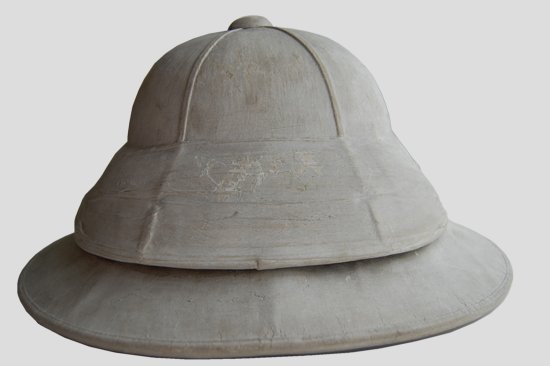
An extremely rare, in fact possibly the only known survivor, of Thomas Townend’s double-helmet commercially named the “Rodel.” (Author’s collection)
This is the “Rodel” helmet. Taking a close look, two things can clearly be seen. Firstly, that the crown, with puggaree, and brim do not directly meet. Secondly, that this example is strongly chalked, but was khaki, for a part of the original color is visible in the gap.
Now, is this another air chamber construction? No, in fact, we have no air chamber but two separate parts – brim and crown – which are connected with six iron brackets. In between there is an open gap of about 2 centimeters to allow ventilation. So indeed it is not the puggaree that gives that voluminous appearance to the shell. The puggaree is just the usual, thin flattened cloth. It is the shell itself that widens – like a visor – over the full extent of the brim overlapping that brim for some centimeters.
A – Upper shell. B – Brim. C – Puggaree. D – Ventilation on top. E – Bracket. F – Screws. G – Sweatband. H – Sharp edge where the shell widens (see picture). K – Rings to fix sweatband with clasps (not shown on the right drawing – 4 rings are fixed on the same level than the 6 screws, taking turns).
An interior picture – taken with a small mirror – shows a shadow at the bottom, which is the ventilation gap. The white canvas above it is the band that can be seen on the close exterior picture of the gap between brim and puggaree. The fabric between this and the green lining is not pith, but cork. The helmet makes a bulky appearance, but – even with the strong chalking – this example´s weight is only 402 grams (14.2 ozs). That is not more than a cork Afrika Korps helmet or a Wolseley´s weight.
On the next picture, two clasps were removed. The edge (H) can clearly be seen, as well as brackets (E) and rings (K). Note: due to the construction, the sweatband is not very broad – just the size of the small piece of shell, that continues the brim.
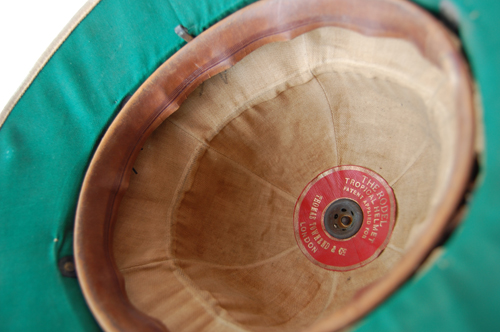
Another interior shot of the Rodel helmet clearly shows where the crown slopes away from the brim to provide the ventilation gap.
We find a later variation of this ventilation system in Stuart Bates’ book, The Wolseley Helmet in Pictures. He shows a further development of the Wolseley helmet with a small visor that covers ventilation holes above the brim. This is basically the same idea of ventilation.
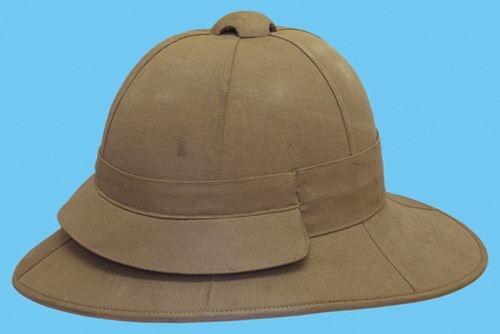
An experimental Wolseley helmet with retro-fitted visor covering ventilation holes. (Photo courtesy of York Museum Trust/York Castle Museum)
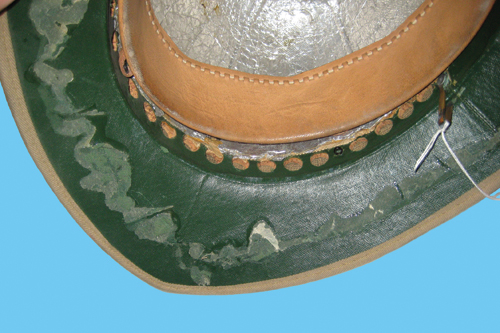
The underside front of the experimental Wolseley showing the ventilation holes beneath the visor. (Photo courtesy of York Museum Trust/York Castle Museu
The Rodel helmet may have been the most efficient sun helmet with its tremendous ventilation system but one wonders how well it would have fared in cold weather conditions. Besides, many helmets have all sorts of ventilation holes covered with wire gauze – with good reason, if one thinks of the fly-covered helmet, displayed in a realistic surrounding, at the Imperial War Museum in London. The uncovered Rodel ventilation would have been an invitation for all kind of insects to nest in that large room.
The extent of its military use is not known to the author but the interior chinstrap hooks tend to indicate that it did see such use.
Roland Gruschka


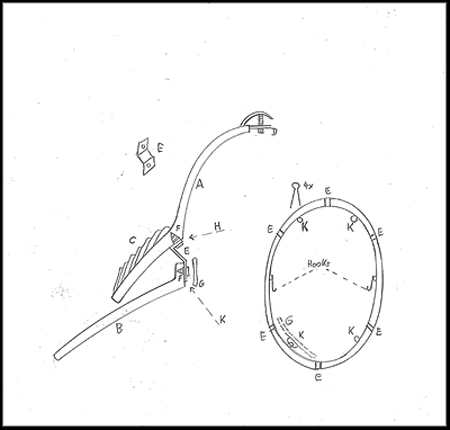
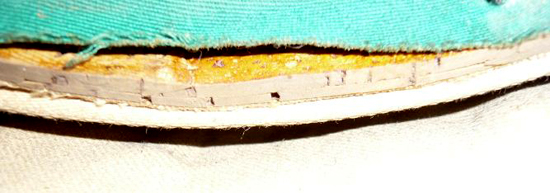
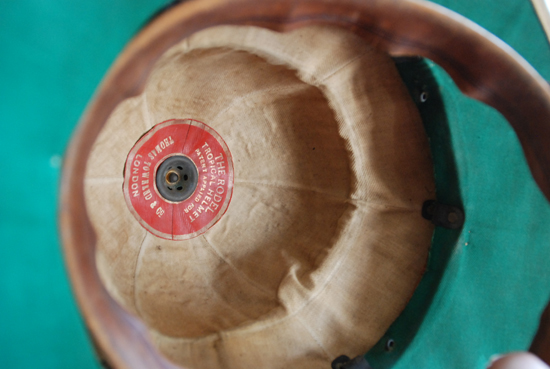
Peter & Stuart,
I cannot believe that you have found a Townend Rodel!!
It is the first actual, reliable confirmation that it even existed. To now, it was little more than anecdote and rumour.
Magnificent. Congratulations.
Best wishes.
Chris.
The credit goes to Roland, who has managed to find some true treasures!